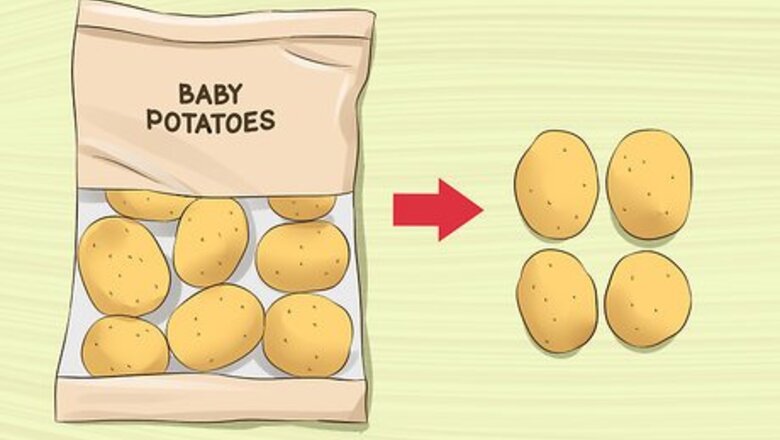
views
Reduce Your Use of Materials and Energy
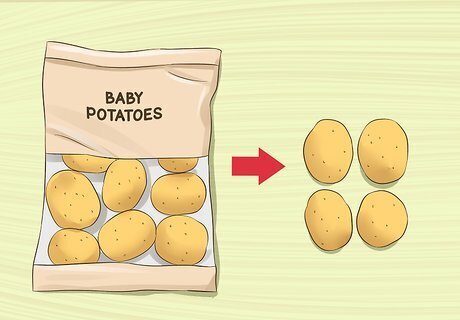
Buy products with less packaging. Avoid single-serve or individually wrapped items. Shop at stores that have bulk dispensers for grains, nuts, dried fruits, and snacks. Bring your own plastic bag or container to put the bulk food in. And try to buy bulk sizes of food or sanitary products, which saves on packaging. When buying produce at the grocery store, avoid packing the product in an extra plastic bag if it isn’t necessary. Vegetables such as potatoes, onions, peppers, tomatoes, beets; and fruits such as bananas, apples, plums, and melons shouldn’t require an extra bag. Instead of buying canned soup or pasta sauce, read up in a cookbook how to prepare them at home. Practice “precycling” by only buying products whose materials can be recycled.

Take a reusable bag with you shopping. Take durable canvas or synthetic-fiber bags, a backpack, or a basket with you to the store, enough to hold whatever you plan on buying. These can usually be bought at the stores themselves. A heavy-duty plastic bag that you use multiple times can serve the purpose almost as well. However, avoid cotton bags as they have a very high environmental impact in their production and they have to be re-used 7,100 times before it breaks-even on the impact compared to disposable plastic bags.
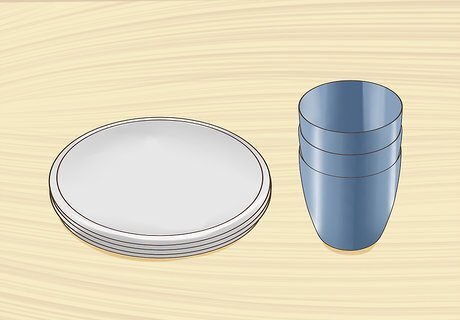
Do without disposables. Disposables contribute large amounts of waste to our environment. They include things like plastic forks, knives, plates, and cups. They also include things like diapers and razor blades. Instead of buying items that you'll throw away after using them, buy items that you can use again and again. For example: Instead of using disposable diapers, try cloth diapers or nappies. You will have to clean them more often, but you'll reduce waste. Get a razor with replaceable blades rather than a disposable razor. You'll still have to throw the old blades away, but you'll save the plastic handle. For picnics, serve with re-usable plastic or wooden plates, cups, and utensils instead of disposable paper or plastic ones.

Cut down on electricity use. Turn off or unplug any electrical appliances that aren't being used, such as the TV, radio, stereo, computer, lights, or chargers for cellphones or mp3 players. Try to wash clothes by hand, and dry them outside as much as possible. And if you purchase appliances, such as dishwashers, washing machines, and dryers, choose ones that are rated with the Energy Star classification. Replace all incandescent lightbulbs with Energy-Star-rated compact fluorescent lightbulbs (CFLs), which can save you $6 in energy costs per year. Try towel drying your hair instead of blow-drying it. If it is cold inside your residence, just put on a jacket or sweater instead of turning up the heat.

Use less water. Try to reduce your shower time to between 5 and 10 minutes. Turn off the water when shampooing or scrubbing. Take fewer baths as well, since they can consume more water than a short shower. When you brush your teeth, turn off the faucet between soaking and rinsing the brush.
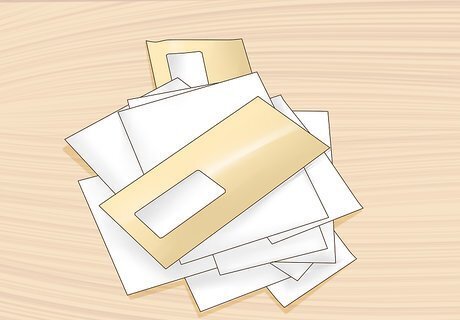
Stop junk mail and paper billing. If you’re receiving junk mail, call the sending company’s 800 number, usually found on the offer or order page, and ask to be removed from their mailing list. Request electronic bill instead of paper ones for all your utilities, member dues, and other periodical payments. You can choose this when signing up for an account. If you are already receiving paper bills, it is not too late to change. Access your account online or by phone, and see if you can switch to electronic bills instead.
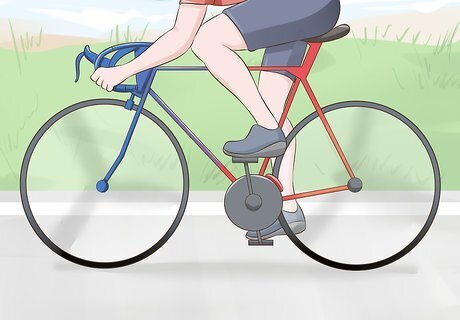
Consider alternative transportation. Try to walk, bike, or take public transit to school or work. If possible, invest in an electric or hybrid vehicle--these options are more fuel-efficient and emit less carbon into the atmosphere. Organize carpools with your neighbors or co-workers to reduce fossil fuel use. Choosing a residence as close as possible to your place of work will reduce both your commute time and energy consumption.

Take the stairs. Escalators and elevators are convenient, but sometimes they are not necessary, especially if you only have to travel 1 or 2 floors. Not only will taking the stairs save electricity, but you'll also get some exercise in. You also won't have to wait in line. Escalators and elevators cost money to run. By taking the stairs, you may see lower prices (if you’re at a shopping center) or a higher salary (if you’re at an office building). There are instances where taking escalators or elevators may be necessary, such as if you have an injury, a bad knee, or need to get to the 24th floor.
Reuse a Variety of Goods
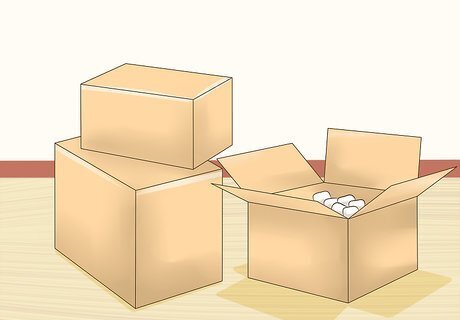
Save packing materials. Hang on to any boxes, envelopes, and other packing materials from products you buy or receive in the mail. You can repurpose these when you need a container to put gifts in before wrapping them, when mailing envelopes or boxes, and when you need packing materials, such as styrofoam peanuts, for a shipment. Boxes can take up a lot of space. Save 1 box to store all of your packaging materials in, but fold the other boxes up so that they take up less space.
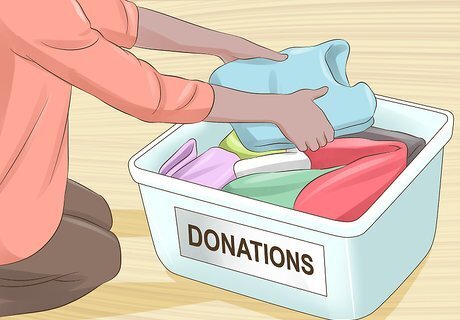
Buy and donate used clothing. Shopping at thrift or consignment stores is an excellent way to pass up energy- and materials-wasting new products. To support these stores’ operations, get in the habit of regularly clearing out your closet, garage, and basement to find items you’re willing to donate. You can also hand clothing down to your siblings. If you and your wears wear a similar size, consider trading outfits with them. When donating clothes, make sure that everything is in good condition. Don't donate old, worn, dirty, or torn clothing. EXPERT TIP Alena Le Blanc Alena Le Blanc Personal Stylist Alena Le Blanc is the Personal Stylist and the Founder of Le Blanc Label. Based in San Francisco, California, Le Blanc Label is the leading personal stylist brand for sustainable style transformations. Alena and her team specialize in seasonal wardrobe refreshes, closet edits, styling for special events, travel, photoshoots, and general personal needs. Alena has been featured in podcasts including EMPOWERED BY WMN, I Am Fearless, and Mind Power Meets Mystic. Alena received her BFA in Fashion and Apparel Design from the Academy of Art University. Alena Le Blanc Alena Le Blanc Personal Stylist Invest in well-made garments that are eco-friendly. Look for natural, sustainable fabrics like organic cotton or recycled synthetics. Look for durable denim with a high cotton content (around 98-99%). Prioritize quality over quantity to extend your closet's lifespan and reduce your environmental footprint.

Purchase reusable products. Favor food products packaged in reusable jars, bottles, and recyclable plastic bins. These can be useful for storing leftovers. And by using nickel-metal-hydride (NiMH) rechargeable batteries, you’ll avoid contributing to the toxic waste source of disposable batteries. Instead of buying bottled water, fill up a reusable plastic bottle or glass jar from the faucet. If you buy bottled water for health reasons, get the largest size available to cut down on packaging waste. Use washable fabric handkerchiefs and dinner napkins instead of disposable tissues.
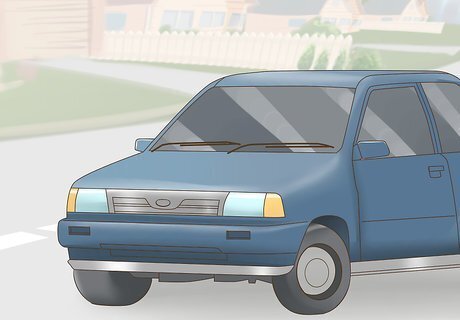
Opt for a used car. It takes a considerable amount of energy and raw materials to manufacture a new car. Buying a compact, fuel-efficient used car keeps you from contributing to this waste and the pollution it produces. These vehicles also will consume less fuel, while taking up less space on the roads and in parking lots. Look for cars from the 1990s or early 2000s that typically get 30-40 miles per gallon, such as the Geo Metro, Ford Festiva or Aspire, Honda CRX HF, Toyota Tercel or Corolla, Mazda Protege, or Dodge Colt. Buying used motorbikes and bicycles can also save resources.
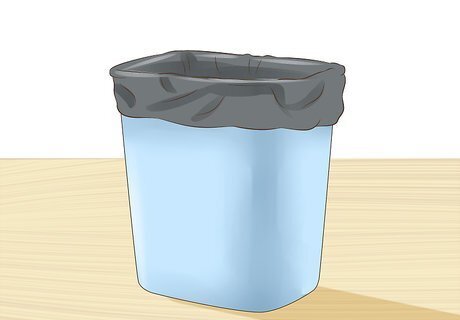
Save plastic and paper bags. You can reuse them to carry your groceries or even as trash bags. They’re also good for storing partially-used produce in the refrigerator, protecting fragile or potentially leaky items in a suitcase, and for general carrying around. Use a plastic shopping bag for small trashcans, instead of buying small garbage bags. Some stores sell nice reusable bags. Consider getting a few of these and keeping them in your car so that you can use them when shopping.

Turn old materials into art. Fabrics, papers, cardboards, metals, and plastics can all be easily used for arts and crafts. Some items can be purely decorative, such as collages, while other items can be more useful, such as coin purses. For example: Transform old magazine photos into a collage. Turn plastic bottles into coin purses. Make a scarecrow for your garden out of old clothes and packing materials. Turn mason jars or metal cans into planters for your herbs.
Getting Into the Recycling Habit
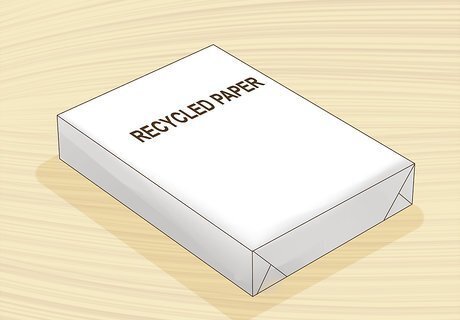
Shop for recycled products. Check the labels of paper, plastic, and metal products to see if they were made from recycled materials. Look for a phrase near the barcode that says something like, “This product was made from 50% post-consumer recycled material.” Some items are made from biodegradable materials. For example, some plastic and straws are made from biodegradable corn.
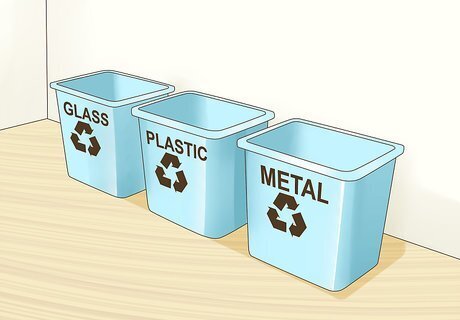
Sort your recyclables. Near your kitchen garbage can, arrange a separate waste bin or bag to hold glass, plastic, and metal recyclable materials. Place another container nearby to hold newspapers and cardboard, if your city requires these to be disposed of separately. Not all cities require you to sort recyclables. Check with your city's recycling rules regarding sorting, pick-up times, etc. Not all plastics are the same. Some of them can be recycled while others can't. Check the numbers on the bottom of your plastic item, then refer to your city's recycling rules.
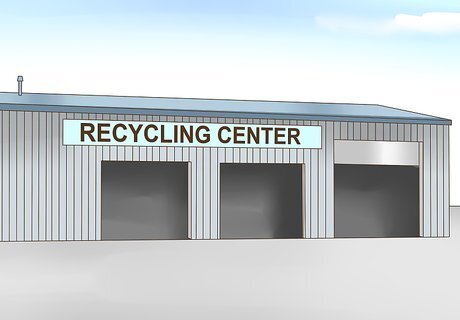
Take advantage of your local recycling center. If curbside pickup up of recyclables is not available in your area, locate the recycling facility nearest to your residence. Be sure to note the hours of operation, since some centers have limited access times. For example, do an internet search for “[the name of your city or county] municipal recycling facility.” Some recycling centers pay you to bring recyclables in.

Check local restrictions. Take a look at the FAQ webpage for your city or county’s recycling facility, which should list which materials that are and are not accepted for recycling. Materials such as styrofoam and some plastics are commonly turned away by recycling centers. On the bottom of plastic containers, look for a number surrounded by three arrows--the universal recycling symbol. The number is an SPI Resin Identification Code, which indicates the type of plastic. The lower the number, the more likely it will be accepted.
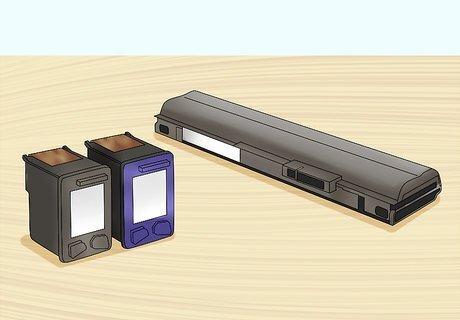
Recycle old electronics. Computers, cell phones, tablets, stereo equipment, microwaves, and similar devices contain toxic metals and other chemicals. It’s best to have these recycled to reduce their environmental impact. Check with your local recycling center about drop-off times for electronic devices. Or donate your equipment to a local non-profit, such as a community center or veterans’ association. Some computer companies, such as Dell, offer to pick up your unwanted computer free of charge for recycling. Hewlett-Packard recycles ink cartridges, laptop batteries, and cell phones, among others. Apple offers a gift card in exchange for your old computer.
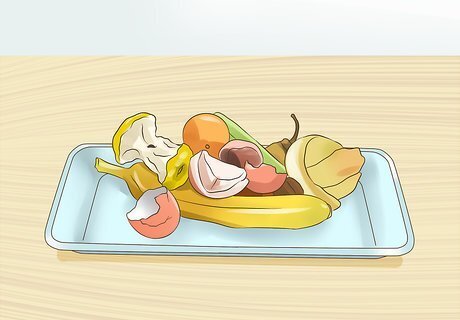
Compost your food and yard waste. Instead of throwing away what you don’t eat, and tossing your landscaping trimmings, why not put them towards a compost heap for your garden? This way you’ll save on fertilizer, and spare your city some change in reduced waste pickup. You can buy a plastic compost bin at most garden centers. Commonly composted materials include vegetable and fruit scraps, egg shells, straw, hair and fur, coffee grounds, tea bags, horse manure, grass and plant cuttings, and leaves. Avoid composting dairy products, meat and fish, cooked foods, weeds, tissues, treated or colored paper, and coal ash.













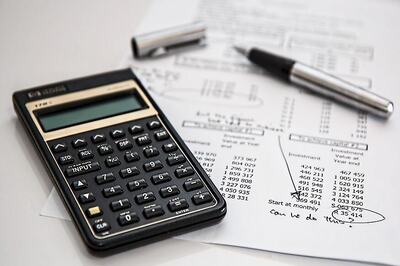


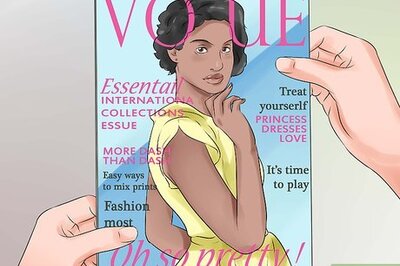


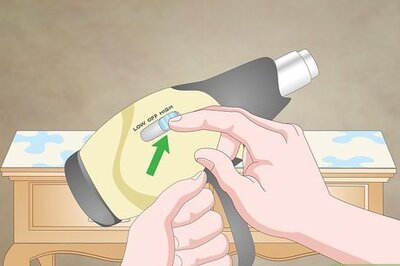
Comments
0 comment